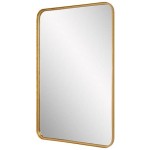Can You Screen Mirror to a Non-Smart TV?
Screen mirroring, the ability to wirelessly display the contents of a smartphone, tablet, or computer screen on a television, has become a popular way to share content and enjoy a larger viewing experience. While this feature is seamlessly integrated into smart TVs, many individuals still own non-smart TVs. This raises the question: can screen mirroring function with a non-smart TV?
The short answer is yes, it's possible to mirror a screen to a non-smart TV. However, it requires the use of external devices that bridge the technological gap between the sending device (smartphone, tablet, or computer) and the receiving device (the non-smart TV). Several options exist, each with its own set of advantages and disadvantages.
HDMI Adapters
One of the most common and reliable methods for screen mirroring to a non-smart TV involves using an HDMI adapter. These adapters typically connect to the sending device's charging port (e.g., USB-C, Lightning) and provide an HDMI output that can be connected to the TV using a standard HDMI cable. This creates a direct wired connection, offering a stable and typically lag-free mirroring experience.
HDMI adapters are particularly suitable for activities requiring low latency, such as gaming or presentations. The wired nature of the connection ensures minimal delay between the source device and the television display. However, the physical cable can be a constraint, limiting movement and flexibility.
Wireless HDMI Transmitters and Receivers
For those seeking a wireless solution, wireless HDMI transmitters and receivers provide an alternative. These devices consist of a transmitter that connects to the sending device's HDMI port and a receiver that connects to the TV's HDMI port. They communicate wirelessly, eliminating the need for a cable between the source and the display.
Wireless HDMI solutions offer greater freedom of movement compared to wired HDMI adapters. However, they can be more susceptible to interference from other wireless devices, potentially resulting in signal degradation or latency issues. It is crucial to select a high-quality wireless HDMI kit to minimize such problems.
Casting Devices
Casting devices, such as Chromecast, Roku Streaming Stick, and Amazon Fire TV Stick, offer another approach to screen mirroring on non-smart TVs. These devices plug into the TV's HDMI port and connect to the home Wi-Fi network. They receive content streamed from compatible apps on smartphones, tablets, or computers.
Casting devices offer a versatile solution, enabling users to mirror not only their device's screen but also stream content directly from various online platforms. However, screen mirroring functionality may vary depending on the device and the operating system of the sending device. It is important to check compatibility before purchasing a casting device.
Miracast
Miracast is a wireless display standard that allows devices to connect and mirror screens directly to each other. Some devices, including select smartphones, tablets, and laptops, have built-in Miracast support. If both the sending device and a Miracast receiver (which can be a standalone device or integrated into some TVs) support the standard, they can connect and mirror wirelessly.
Miracast offers a convenient method for screen mirroring without requiring additional cables or applications. However, compatibility can be an issue, and not all devices support Miracast. Ensuring device compatibility is crucial for a successful connection.
Using a Laptop as a Media Server
Another option involves configuring a laptop as a media server and connecting it to the non-smart TV via HDMI. Software such as Plex or Kodi can be used to create a media server on the laptop, allowing content to be streamed to the connected TV. While not strictly screen mirroring, this method provides a way to share content from the laptop on a larger screen.
This option offers flexibility in terms of content management and allows for playing various media formats. However, it requires setting up and maintaining the media server software on the laptop, which may involve some technical expertise.
Choosing the Right Method
The best method for screen mirroring to a non-smart TV depends on individual needs and priorities. Factors to consider include budget, desired level of portability, required video and audio quality, and the types of content to be mirrored. Wired solutions offer greater stability and lower latency, while wireless solutions offer greater flexibility.
Understanding the available options and their respective advantages and disadvantages allows individuals to choose the most suitable solution for mirroring their screens to non-smart TVs and enjoying a larger viewing experience for various content.

How To Screen Mirror Iphone A Non Smart Tv

How To Mirror Android Screen Non Smart Tv Slashdigit

How To Connect A Phone Non Smart Tv Wired Wireless Solutions Pointerer Com

How To Mirror Phone On Non Smart Tv Chromecast Screen Mirroring Hindi
How To Cast My Mobile Wirelessly A Non Smart Tv Quora

How To Mirror Phone On Non Smart Tv Chromecast Screen Mirroring Hindi

How To Connect Iphone Screen Non Smart Tv Mirror

How To Mirror Android Screen Non Smart Tv Slashdigit

How To Mirror Android Screen Non Smart Tv Slashdigit

How To Mirror Android Screen Non Smart Tv Slashdigit








